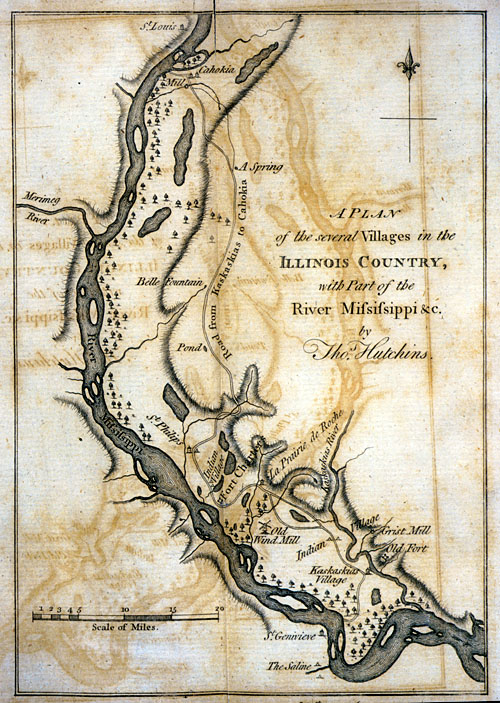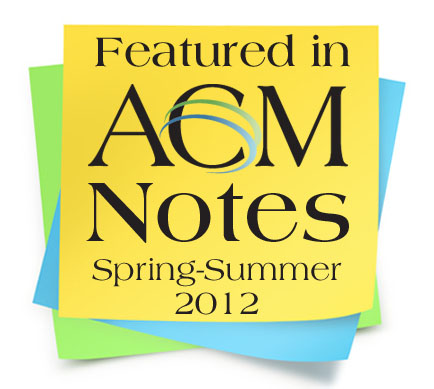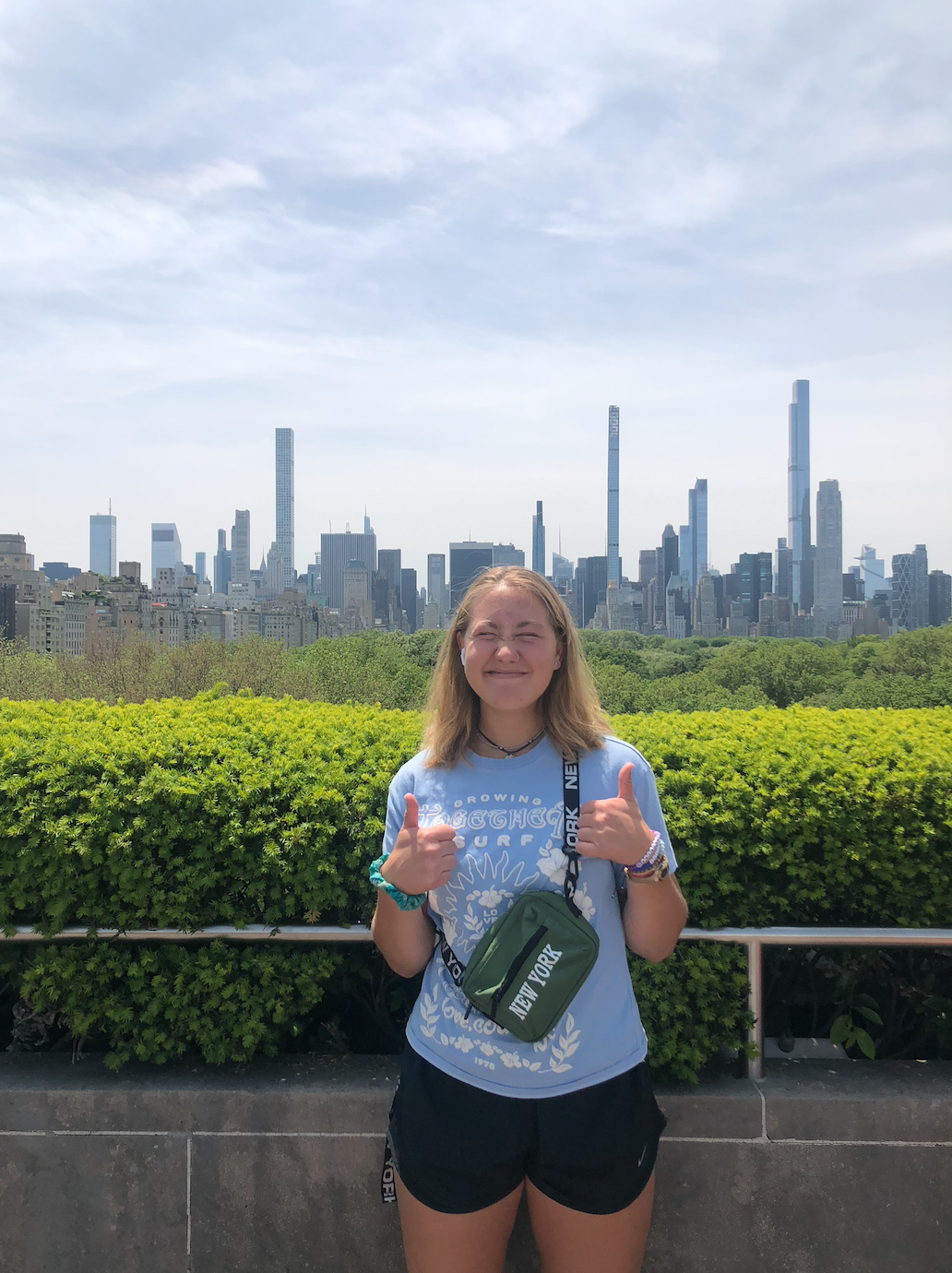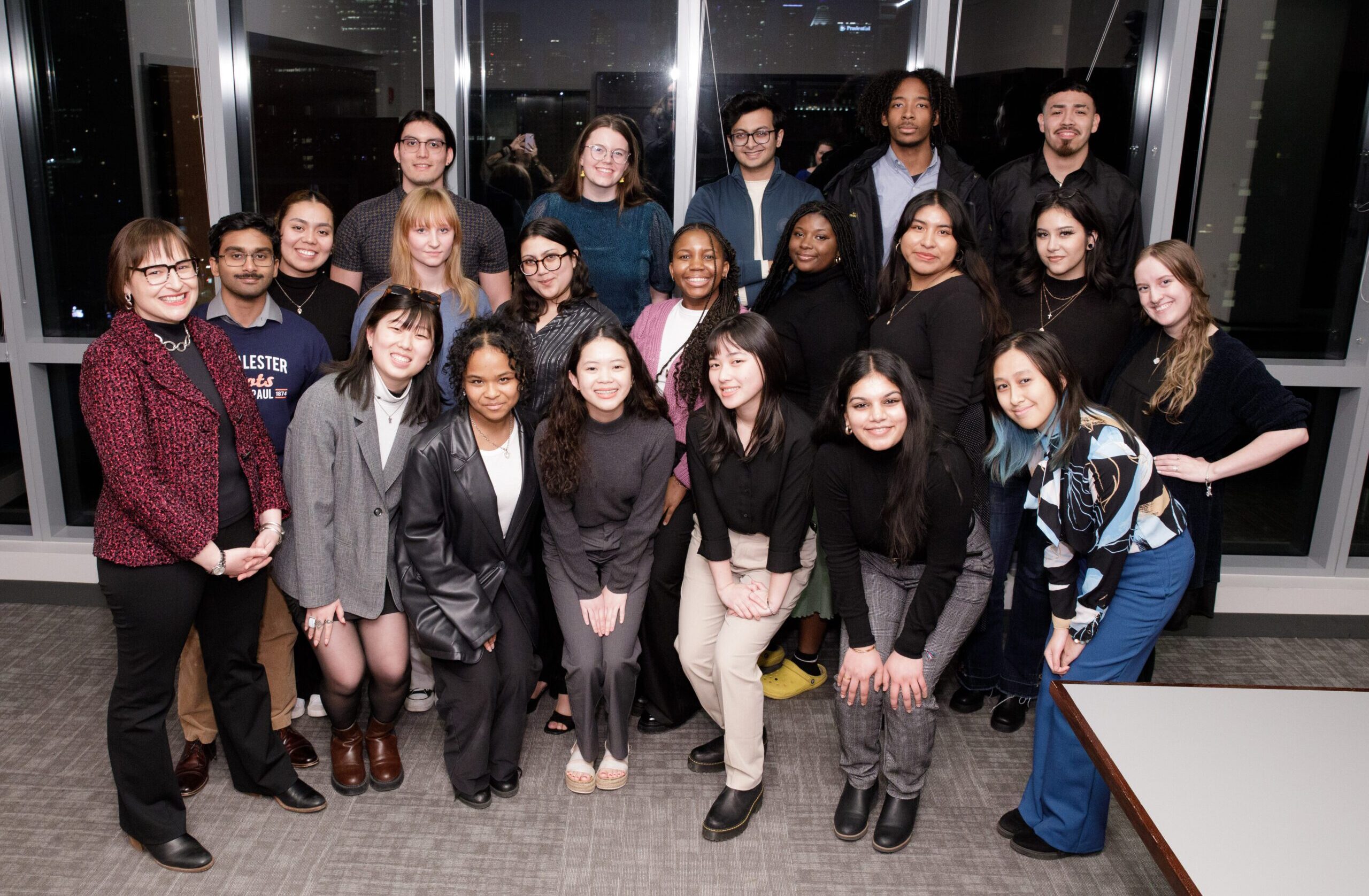You have been introduced to a profound debate. Now ask a question in that debate. Start to answer.
For Scott Heerman, this advice charted a new way to approach a research project – ask a question, and then use your question to find your way into the source materials, wherever they might lead you.
It was fall 2005 and Heerman, a junior at Earlham College, was in Chicago for ACM’s seminar at the Newberry Library. The advice came from his professors and the library’s research staff.
 Scott Heerman in front of the Newberry Library
Scott Heerman in front of the Newberry Library
That semester, Heerman’s questions led him into the Newberry’s remarkable collections. Seven years later, he continues asking questions in an intellectual adventure that has taken him to graduate school and, recently, back to the Newberry on a fellowship for his scholarly research.
A map charts the course of research
As one of the premier research libraries in the humanities, the Newberry Library’s collections are vast. But it was a single document from those collections – a map printed in England in 1778 – that set the course for Heerman’s research project during the fall 2005 Newberry Seminar: Research in the Humanities. The map detailed the Illinois Country, a territory straddling the Mississippi River south of St. Louis in the mid-1700s that was dotted with a few French settlements and Indian villages.
Heerman was intrigued. “Reading [the map] in sophisticated ways,” he said, “you could see that there was a story of plantation production and slave societies in the Illinois Country, which was just all new to me.”
The topic that semester was “The Problem of Slavery and Visions of Freedom in Western Culture” and the seminar was co-taught by Kenyon College professors Robert Bennett and Glenn McNair. Heerman, a double major in political science and history, had picked the program for its intellectual rigor and compelling subject matter.
 Thomas Hutchins, “A Plan of the Several Villages in the Illinois Country” (London, 1778). The Newberry Library, Chicago (VAULT oversize Graff 2029 opp. p. [1]).
Thomas Hutchins, “A Plan of the Several Villages in the Illinois Country” (London, 1778). The Newberry Library, Chicago (VAULT oversize Graff 2029 opp. p. [1]).
Photo courtesy of The Newberry Library
“I don’t know that I got all of that [information from the map] the first time I looked at it,” said Heerman, “but thinking about it over the years, this is what I’ve come to understand this document to be. So if you have commodity production and colonialism, it stands to reason, my seminar taught me, that there would be slaves somewhere.”
Questions were emerging, and Heerman took them into the Newberry’s holdings. The Ayer Collection was particularly rich, with census data, travel literature, probate documents, the papers from a British slave trading company, and other sources. He found clear evidence of the slaves, both under French rule and continuing under the British, who gained the territory that is now Illinois in 1763.
Heerman’s seminar project focused on how slavery in the Illinois Country changed as the ruling empire shifted from France to Britain. When he returned to Earlham the following semester, he used the project research as the basis for his senior thesis. “I engaged much larger questions about the nature of the colonial experience in the New World, which really was not a focus of the seminar, [as well as] indigenous histories about the roles of Indians in North American history,” he said. “I added those new literatures to the mix and was able to make a much broader, expansive argument about slavery in the [Illinois] region.”
A “wild ride” through a score of courthouses
From college, Heerman went on to graduate school in history at the University of Maryland, knowing that he wanted to continue with his research on slavery and emancipation. The approach he had learned at the Newberry – ask a question, start to answer – plunged him deeply into a new set of sources as he expanded his research to include the early decades of the 19th century and Illinois’ emergence into statehood.
 Records in the Pope County Clerk’s office, including a stack of indentured servitude contracts and the metal box they are stored in.
Records in the Pope County Clerk’s office, including a stack of indentured servitude contracts and the metal box they are stored in.
Photos courtesy of Scott Heerman
“One of the implications of taking that approach is that you develop radically different ideas of what is an archive, what is a source, what can you use,” said Heerman. “What that did for me was to turn to courthouses, and recognize that we don’t think of these as archives, but there’s an abundance of primary source material tucked away in county clerks’ offices in every single county.”
In the course of his dissertation research, Heerman has traveled to nearly a score of counties, mainly in southern Illinois, searching for documentary evidence of slaves from roughly 1750 to 1840. He’s looked at a variety of documents, such as bills of sale, indentured servant contracts, freedom lawsuits, criminal indictments for kidnapping free African Americans to sell them into slavery, probate inventories, deed books (which list property, including human property), and emancipation bonds.
The condition and availability of such records varied widely, from well-ordered to simply bundles of documents, tied up in string, piled haphazardly on shelves. While files from the 1830s may have been preserved at one county seat, there may be little or nothing from that era in the neighboring county’s courthouse.
“It’s just been a wild ride [finding] where these sources are kept,” said Heerman, noting that the research he did several years earlier at the Newberry was an advantage. “I’d spent so much time getting my head around the problem that, if I understood it correctly, [I knew] there should be [particular kinds of] documents in these places. Sure enough, they were.”
Putting the pieces together
The picture that Heerman paints of slavery in Illinois during the first half of the 19th century is complex, indeed. It reveals a constant struggle, in which the laws governing enslavement did not necessarily carry the day. For example, hundreds of freedmen were kidnapped in Illinois and taken to slave states to be sold, and indentured servant contracts could effectively be slavery in all but name.
“At the same moment that you have people drawing on [the tradition of] a century of commodity production on the Mississippi River and of slave labor and of absolute domination over a coerced labor population, you have other people who are fighting tooth and nail to [establish] protections for free blacks and are successfully dismantling the social networks that enabled some people to enslave others,” he said. “That process took decades to play out.”
 The Randolph County Museum, where Illinois Country documents from the 18th century are held.
The Randolph County Museum, where Illinois Country documents from the 18th century are held.
Photo courtesy of Scott Heerman
The path to Illinois becoming a free state was “incredibly messy,” according to Heerman, and was different from the way that emancipation was secured in other parts of the U.S. He’s amassed a large body of evidence in through his research in the courthouses and elsewhere. Now he’s pulling it all together.
“The labor of the project now is to take all of this on-the-ground material and make a bigger story out of it,” said Heerman. “I think I’ve figured out what [the bigger story] is, but that doesn’t mean I can convince anyone else that’s what it is…. When I look at a bill of sale, I make a huge intellectual leap as to what’s going on in these people’s lives based on a lot of time looking at these records, but that doesn’t mean I can make my reader take that same leap. Printed sources like newspapers will help with that.”
What better place to look for printed sources – travel narratives, state reports, newspapers, and the like – than the Newberry? Heerman applied for one of the library’s short-term research fellowships for faculty and graduate students, received it, and recently spent a month there in residence.
What every good college course should do
Heerman expects to complete his dissertation during the next year. After that, he would like to combine research and teaching as a professor at a liberal arts college. His experience as an undergraduate at the Newberry laid the foundation for his development as a scholar, and it also has provided a model of the dynamic that he tries to foster in his teaching. Questions, not surprisingly, are at the center of the model.
“Take things that people take as statements – such as ‘Illinois was a free state’ – and turn them into questions,” said Heerman. “Take something that you think is fixed and given and unchanging, and turn it into a fundamental question. You can do that for everything, and that’s the fun, right? Then it’s up to the student to decide when those questions are answered and when they’re not.”
The Newberry Seminar, he continued, “took a very, very fixed view of 19th century American Southern plantation slavery, the images we absorb from Uncle Tom’s Cabin, and just sort of said ‘No, actually, that is one variation on many [types of slavery], and that is part of a much larger, broader, global series of questions about slavery and freedom in the human experience.'”
“That’s what the Newberry Seminar really did for me,” Heerman said. “It took a lot of fixed things and turned them into questions, some of which I’ve pursued aggressively, exhaustively, but others of which I’ve just sort of let simmer on a back burner, but will come back to. I think that’s what every good college course should do.”
Links:









